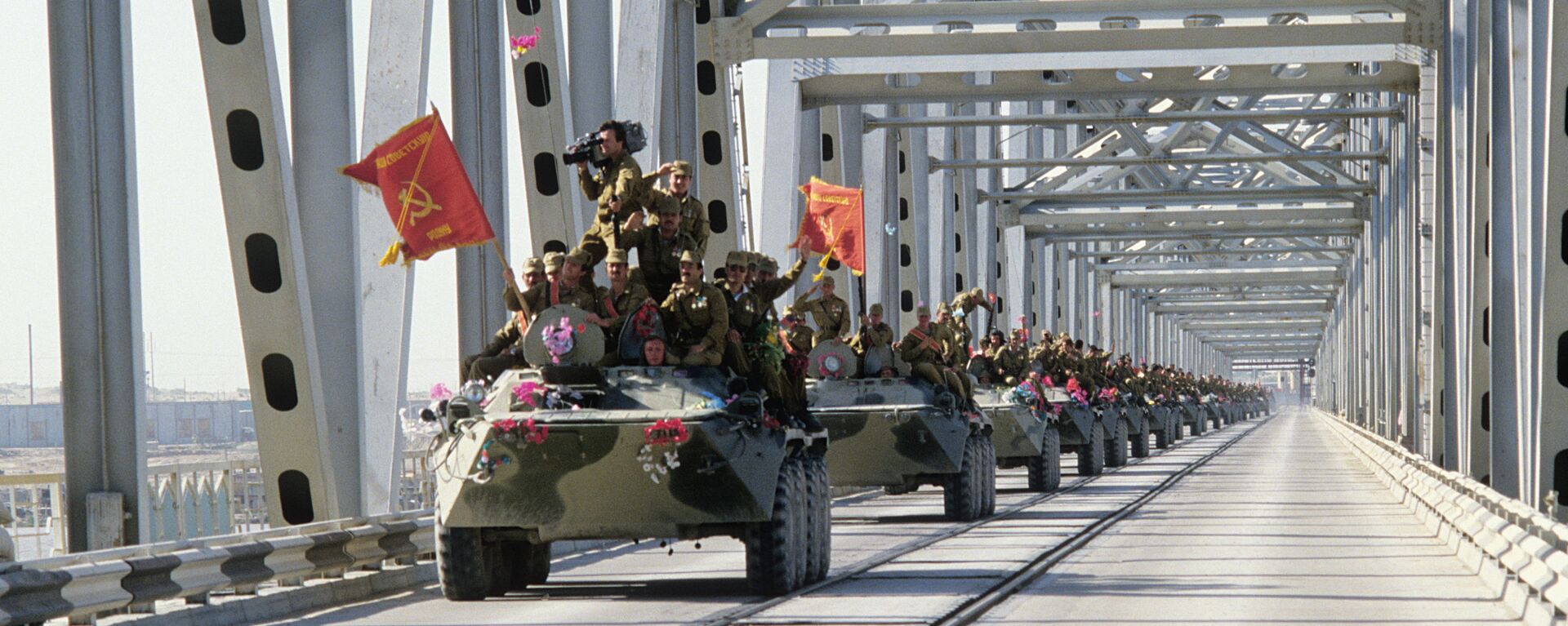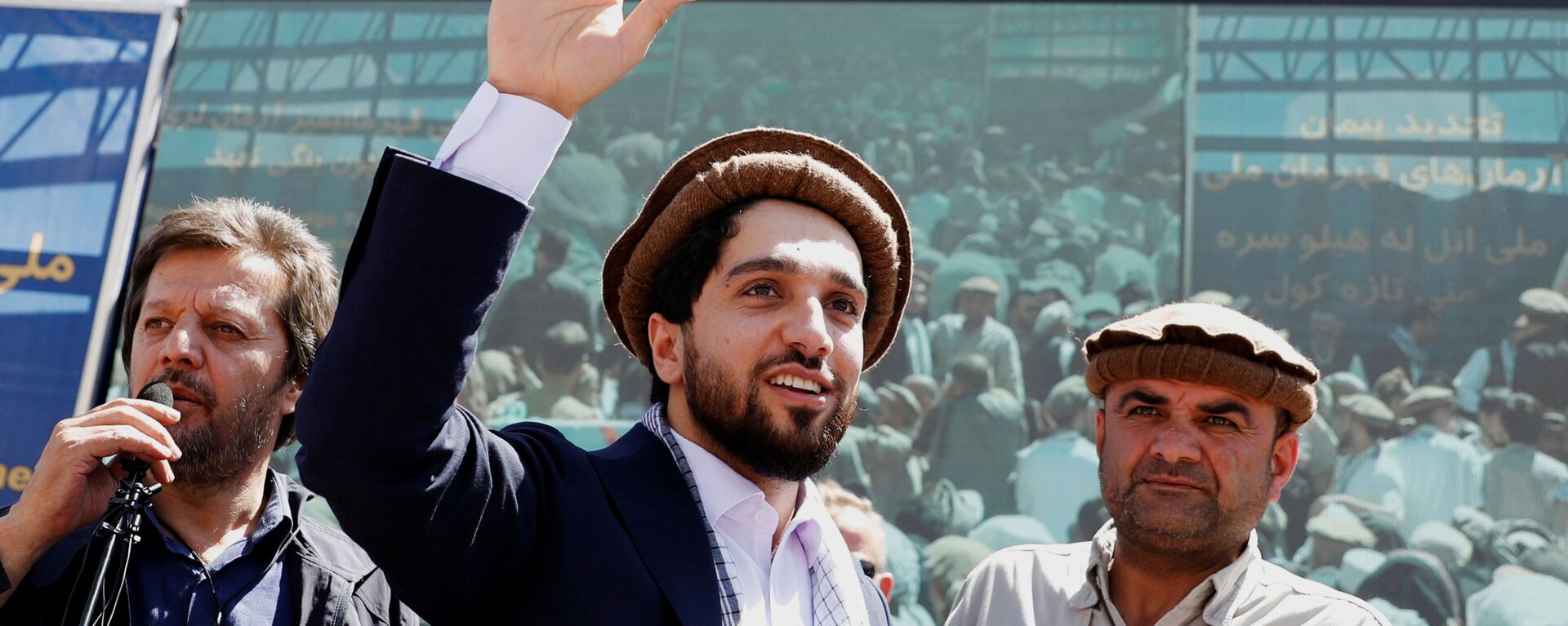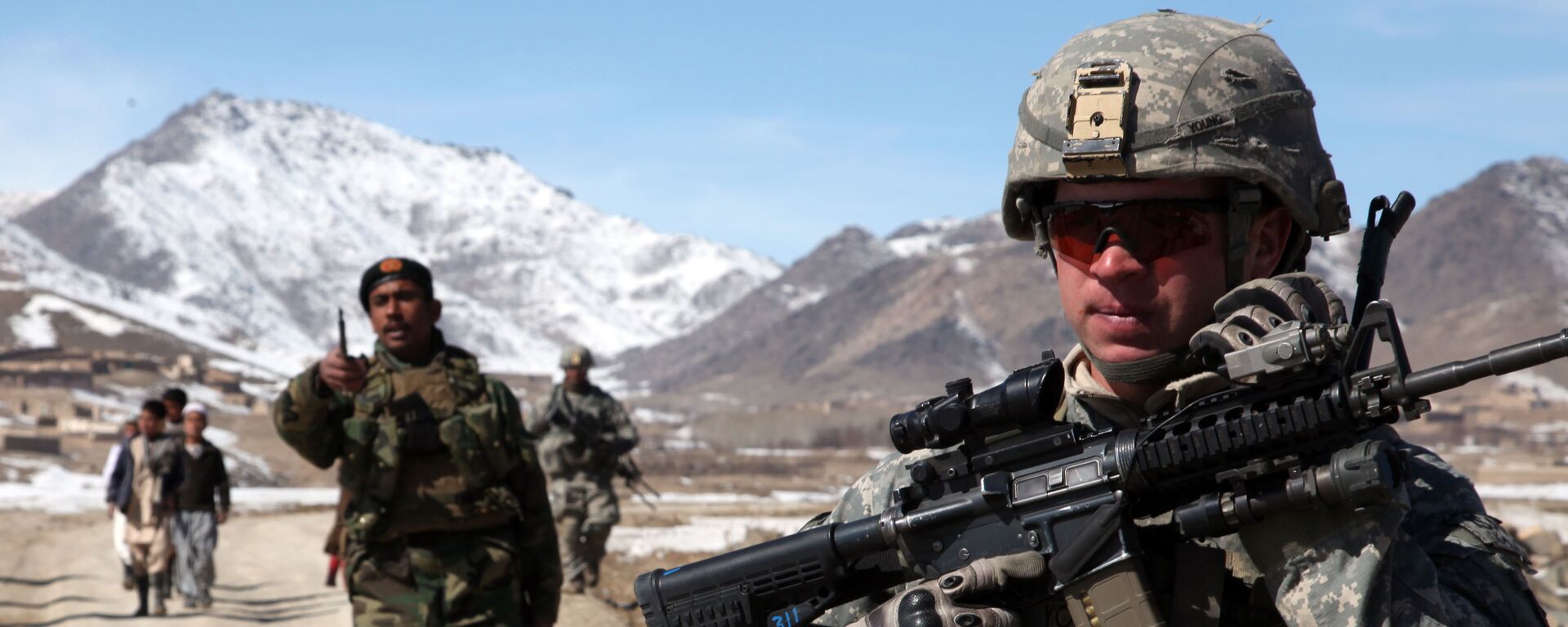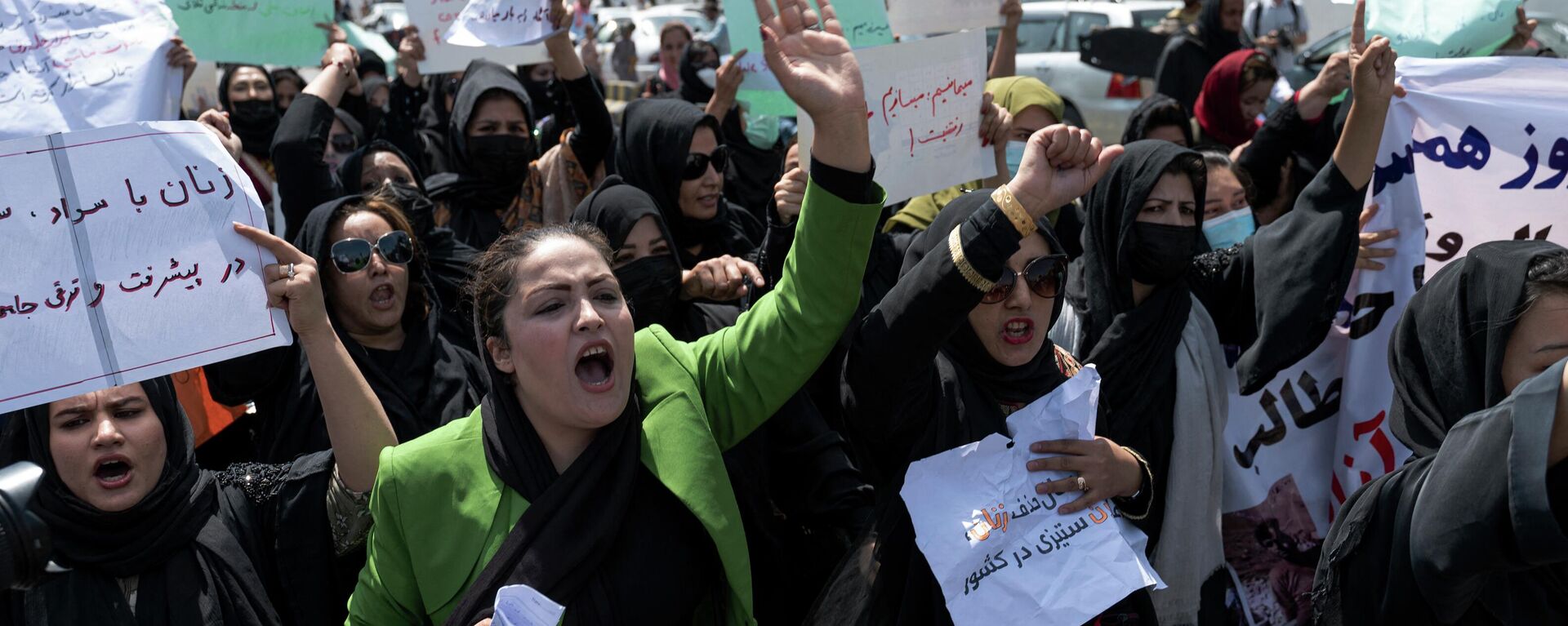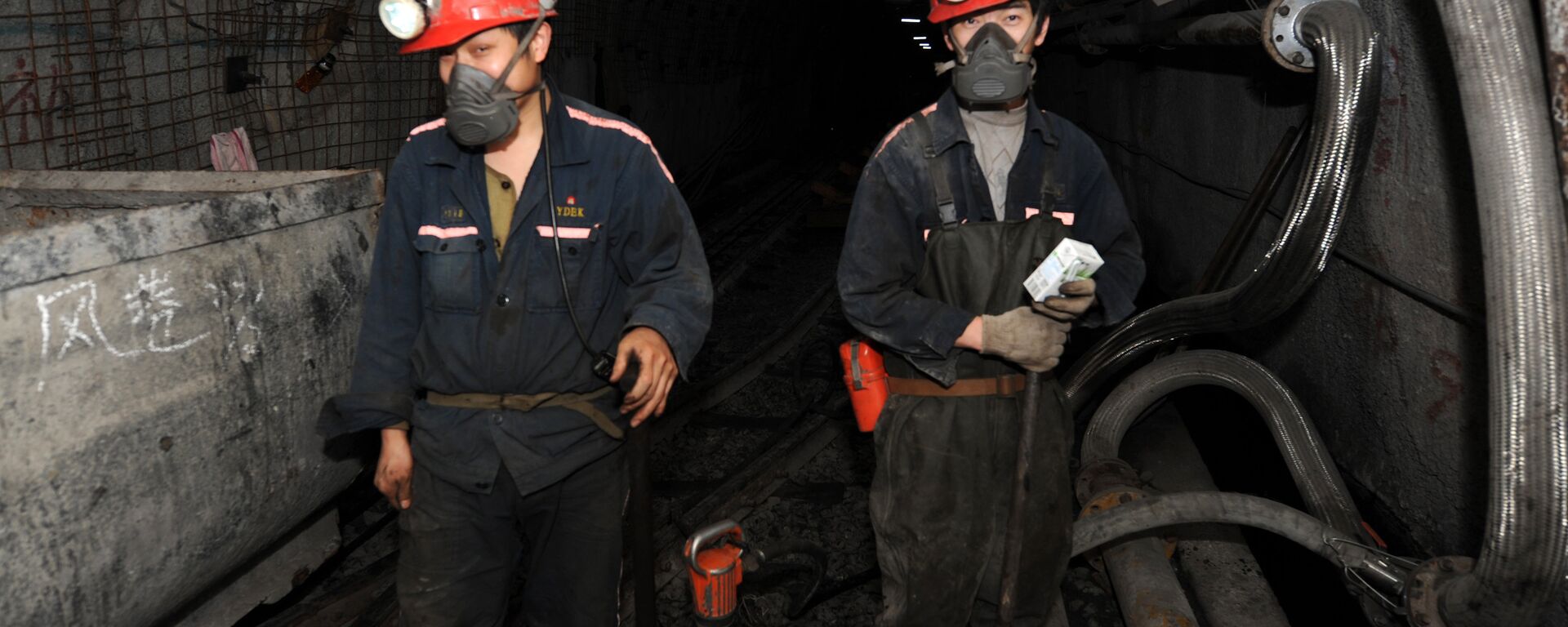Afghanistan 'Battle Was Lost From Beginning' Built on US Desire to Reshape World in Own Image: Prof
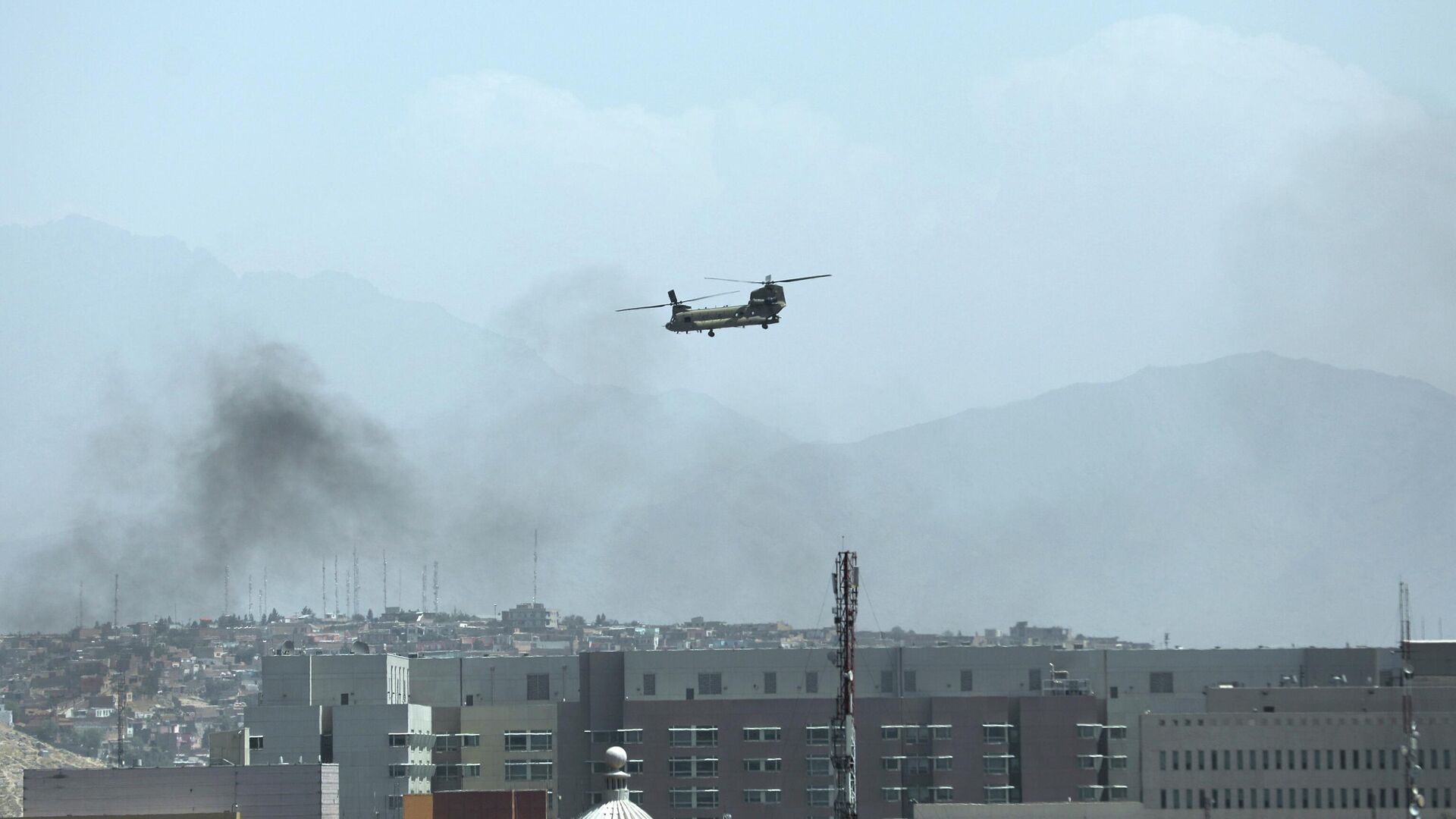
© AP Photo / Rahmat Gul
Subscribe
Monday marks the one-year anniversary of the fall of Kabul and the collapse of the US-led coalition of nations’ 20-year project to build a Western puppet state in Afghanistan. The Afghan war caused the deaths of up to 200,000 Afghan civilians, security forces personnel, and Taliban fighters, as well as over 7,500 coalition troops and contractors.
On a balmy summer day in mid-August of 2021, the 20-year US-led nation-building project in Afghanistan came to an abrupt end. Following a 10-day blitzkrieg offensive in which the Taliban* captured 32 of the country’s 34 provinces with little resistance, the militants encircled and then entered Kabul and caused its government to flee, all while US and coalition forces, diplomats, and intelligence agents were still evacuating.
Afghanistan has been mired in foreign-backed civil conflict for generations, with the US-led invasion of the country in 2001 ensuing 23 years after the CIA kicked off Operation Cyclone - a covert action involving the deployment of jihadist fighters and tens of billions of dollars’ worth of weapons and cash to Afghanistan to fight a fledgling Soviet-backed government.
“We have to look at the history – the United States created the Afghan mujahedeen against the Soviet Union, when the Soviet Union came to help Afghanistan…That Islamic fundamentalism which includes Taliban, Mujahideen, ISIS [Daesh]** and others was created by the West,” says Dr. Zalmay Gulzad, a specialist on Afghan politics and professor of social sciences at Harold Washington College in Chicago.
In the mid-1990s, a few years after the end of the Cold War, Zbigniew Brzezinski, national security advisor to President Jimmy Carter, boasted that the overarching goal of the US project in Afghanistan was to “make the Soviets bleed for as much and as long as is possible,” and to coordinate with the intelligence services from the UK, Pakistan, Saudi Arabia, and other countries to make this happen.
Over four decades on, this strategy remains central to Washington’s calculations, Dr. Gulzad says, comparing US attempts to now use the Taliban to stir up trouble along Russia’s soft underbelly in Central Asia to the NATO proxy conflict against Moscow in Ukraine. Iran is another major target of US geopolitical ambitions, and Washington would like to play on the differences between the Sunni Taliban and the Shia Iranian state to “create problems” for the Islamic Republic, the academic argues.
Graveyard of Empires
Brown University’s Costs of War project has calculated that the War in Afghanistan cost the United States alone more than $2.3 trillion, equivalent to $300 million per day for nearly 20 straight years. Notwithstanding the extravagant spending, and the rotational deployment of over 800,000 US troops and tens of thousands of personnel from over three dozen allied nations over the past generation, the Afghanistan project, once described by Harvard academic and chickenhawk Michael Ignatieff as a “humanitarian” “nation-building lite” adventure, has failed spectacularly.
The causes are legion, ranging from the pervasive corruption of Afghanistan’s political institutions and security structures (whose true fragility was demonstrated in August 2021), to the coalition’s tolerance for and even cooperation with unsavory warlords, drug traffickers, and even child sex criminals, and the imperious nature of the Western-backed project itself.
“It was a lost battle from the beginning,” says Dr. Swasti Rao, an associate fellow at the Europe and Eurasia Center at the Manohar Parrikar Institute for Defense Studies and Analyses in New Delhi.
“One of the problems with the US is that it wishes to see the entire world in its own mirror image, what is called the liberal world order comprising of free market and democracy. This approach has a problem when enforced top down without taking account the regional and grassroots realities, cultural sensibilities of the people at hand. The government of Ashraf Ghani was never a popular government with massive charges of corruption that the Afghan people did not identify with,” Rao explains.
The researcher noted that all around the world, but in West Asia in particular, the “project of the liberal order of which the US considers itself a custodian” has met with failure.
“After 20 years, about $2.5 trillion and the lives of its citizens and soldiers, the US realized that retreating is the best possible decision, something they had been planning for a long time,” Rao says.
Challenges, Opportunities
A year on from Kabul’s fall, the situation in Afghanistan is unstable, unpredictable, and dangerous, both for ordinary Afghans and for countries in the region.
“After one year of the US withdrawal from Afghanistan and the Taliban takeover, it is Afghans who are suffering more than any other regional or extra-regional states,” says Shreyas Deshmukh, a researcher with the National Security Program at Delhi Policy Group, an India-based think tank.
“Now it is evident that the Taliban has not given up its extremist tendencies and will continue to stick with its interpretation of the extremist Sharia-based governance model. They do not have any concrete ideas to govern the state because [the Taliban] is a primarily insurgent organization. Therefore, anti-social elements including other terrorist organizations, drug lords, and human traffickers [have been] taking advantage of this vacuum. During the initial months after the Taliban takeover, the level of violence was reduced but now there is an uptick, as anti-Taliban forces are regrouping,” Deshmukh notes.
The researcher points to an important dilemma for the Taliban: whether to make concessions on its governance model in exchange for cooperation with, assistance from, and possible recognition from other countries. Such a decision, Deshmukh notes, would carry with it the risk of heightening divisions within the Taliban’s ranks and even raise the possibility of their government’s collapse and renewed civil war. “On the contrary, if they implement a strict interpretation of Sharia law while going against international norms then the country will once again become a haven for terrorist organizations,” he warns.
Dr. Rao concurs with this pessimistic appraisal of Afghanistan’s internal situation, noting that while the Taliban proved capable of taking over from the Western-backed government, “they do not know how to engage in governance per se, let alone [create an] inclusive government with minorities and women. It’s been a year of denial of women’s rights, media crackdown, and retaliatory killings amid mass hunger. Especially with the Taliban bringing back the feared Ministry for the Promotion of Virtue and the Prevention of Vice, enforcing the group’s austere interpretation of Islam, it is more unlikely that women or minorities might have a say in the government any time in the foreseeable future,” he says.
Worse yet, Rao says, if the situation continues to fester, it will cause “even more unrest, drugs and illegal weapons smuggling, bloody fights between various fundamentalist groups like ISIS-K and the Taliban; in short a situation that will remain a regional security [concern] with uncontrolled global ramifications.”
The scholar emphasizes that the international community has asked the Taliban to form an inclusive government, ensure the rights of women and minorities, and guarantee that Afghanistan will no longer serve as a launch pad for global terror operations. “Unless that happens, the trade or investment promised by China will not flow. It is important to note that even Russia and China, which share a better equation with the Taliban compared to the Western world, have not recognized their government,” Rao believes.
At the same time, the researcher notes that although the US withdrawal exacerbated regional chaos, landed sophisticated weapons in Taliban hands, and created a regional power vacuum, it also “created space for countries like Russia, China and Iran to play a far more decisive role in the region,” as Washington shifted its attention to Eastern Europe and China.
Deshmukh concurs. “The Taliban is not a designated terrorist organization by many states including the US. However, its leadership is under UNSC and US sanctions. The real question is, will the countries recognize the Taliban regime in the near future? China, Pakistan, Russia, and Qatar have given some signals that they might recognize the regime. However, it remains a risky business considering that the Taliban is continuing close cooperation with terrorist organizations like AQ, Tehrik-e-Taliban Pakistan and Lashkar-e-Taiba. Many of their leaders have taken safe haven in Afghanistan.”
“No country would like to align itself with this regime and recognize them, for now. Meanwhile, they will continue to engage with the Taliban to provide humanitarian assistance to Afghans, keep a tab on terrorist elements which could threaten the national interest of those countries, and further to reap some economic benefits from Afghanistan,” Deshmukh concludes.
* A group under United Nations sanctions for terrorist activities.
** A terrorist group outlawed in Russia and many other countries.

